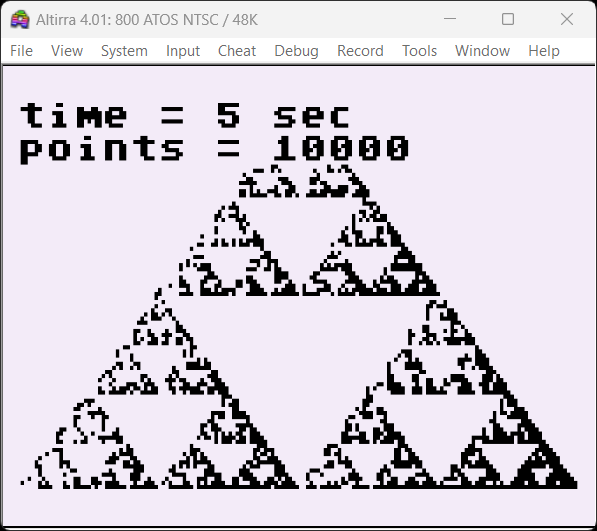OTHER CONTRIBUTIONS: SIERPINSKI CHALLENGE (optimized)
This example is the optimized version for the "Sierpinski Challenge", an exciting challenge regarding fractals. This example reproduces the famous "SIERPINSKI TRIANGLE" on retrocomputers. It is a very simple fractal to obtain, which takes its name from the mathematician who first studied its properties. Such a triangle can have different shapes and sizes and can be obtained in various ways. One of the methods to create it is the so-called "Game of chaos". The fractal is built by creating iteratively a sequence of points, starting from a random initial point, in which each point of the sequence is a given fraction of the distance between the previous point and one of the vertices of the polygon; the vertex is chosen at random in each iteration. Repeating this iterative process a large number of times, selecting the vertex at random at each iteration, often (but not always) produces a fractal shape. Using a regular triangle and the factor 1/2, it will result in a Sierpinski triangle.
source
compile
sandbox
issues?
back to examples


